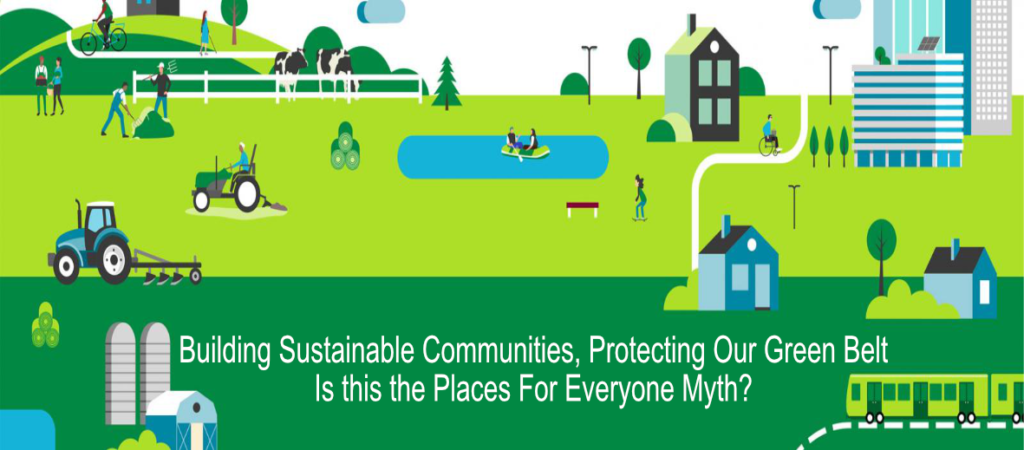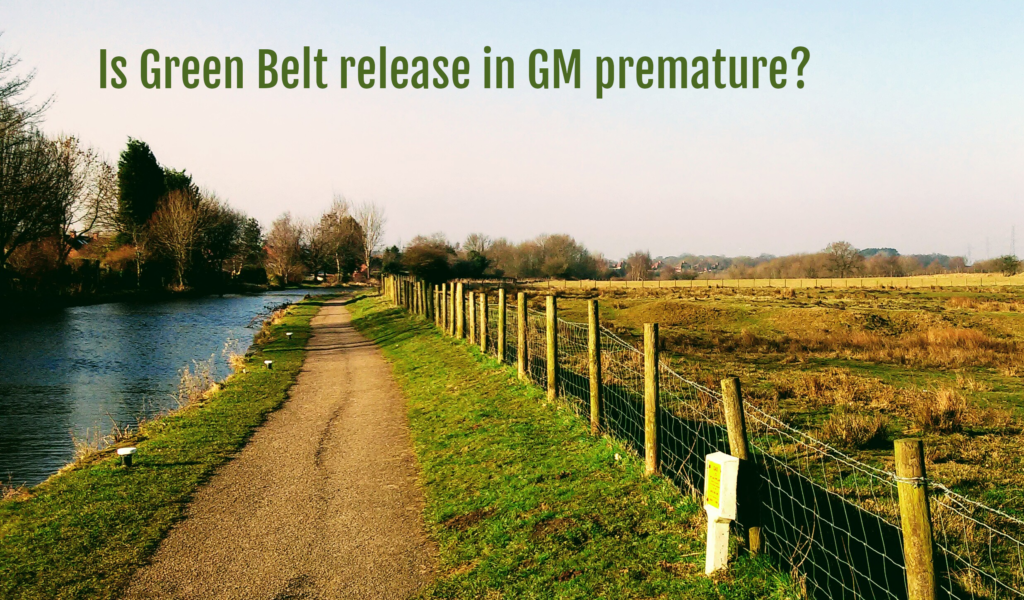Building Sustainable Communities, Protecting Our Green Belt – the Places For Everyone Myth?
Article by a Norden Resident
We are moving rapidly towards the Examination in Public in to Places for Everyone (PfE), the latest grand plan from Greater Manchester Combined Authority (GMCA). It is to be hoped that the Examination in Public process will provide an opportunity for significant amendments, to this proposal, and for common sense to prevail, as the plan moves forward.
Why are significant amendments needed, you may ask – here are a few reasons.
Calculations; – The numbers used to justify the whole PfE scheme are seriously out of date. Brexit, Covid lockdown and recovery, the war in Ukraine and the cost-of-living crisis, mean that a comprehensive review, using up to date data, is required before the viability of any such strategy can be assessed.
Democratic Deficit: – The originating documents for the GMSF (the precursor to PfE) made it clear that such a proposal could only move forward with the unanimous agreement of all ten Local Authorities within the GMCA. The proposal was rejected by one of those Authorities, but the GMCA chose to charge on regardless- why was this?
Approach To Green Belt; – The whole approach to developing on Green Belt, within PfE is fundamentally flawed, and this is of prime importance to communities in Bamford, Norden and throughout the whole of Greater Manchester. In the case of Rochdale, the vast majority of entities asked to bring forward development proposals were house builders and developers, few other bodies were asked to outline schemes. How surprising is it therefore that the vast majority of housing sites brought forward for consideration are in Green Belt? Large house builders will always favour developing on Green Belt because doing so reduces risk and maximises profits for cash-hungry enterprises. The above goes some way to explaining how and why schemes such as Bamford Green Belt and Crimble Mill, which will destroy large swathes of local Green Belt, have been incorporated in PfE.
The National Planning Policy Framework (NPPF) is crystal clear about the protections afforded to land with Green Belt status.
Paragraphs 139 to 143 relate to changes in Green Belt status of land during the preparation of Local Plans, such as PfE. They state:
“Once established, Green Belt boundaries should only be altered where exceptional circumstances are fully evidenced and justified, through the preparation or updating of plans.”….. and “the strategic policy-making authority should be able to demonstrate that it has examined fully all other reasonable options for meeting its identified need for development”
The idea that “new additions to Green Belt” incorporated in PfE offset the loss of existing Green Belt is spurious at best; what is lost, in many cases, is prime agricultural land or recreational space – this is to be replaced with low grade space of little agricultural or recreational value. How is this a proportionate response to a serious loss of resource?
Further emphasis of the importance of protection of Green Belt land is provided in Paragraph 147 of the NPPF, which relates to planning applications for development proposals in Green Belt and states:
“Inappropriate development is, by definition, harmful to the Green Belt and should not be approved except in very special circumstances”
The caveat of “very special circumstances” is an important exception to a rule. In numerous cases, Authorities have construed the maximisation of Council Tax revenue as a very special circumstance which overrides any other detriment or harm caused by development.
Sustainable Development: – PfE is littered with development proposals which do little or nothing to develop and nurture local communities. Throughout the document there are schemes which maximise housing density but fail to add to the stock of doctors, dentists, schools, shops, community facilities and public open spaces. Why is this? Does the answer lie in the fact that such provision detracts from the profits of builders, or is it that Planners are so eager to reach housing targets that other provisions are not a priority?
The planning system allows developers to escape the provision of desirable facilities, on site, by providing a financial sum in lieu, for use by the local community. This is known as a Section 106 provision. In a number of cases, both within Rochdale and beyond, developers have agreed at the Committee stage that this provision is required, only to invent spurious reasons for non-payment, upon completion. PfE, in its current form does nothing to address this issue, so communities will still be deprived of much needed facilities.
Affordable Housing; – This is a key part of sustainable development for vibrant communities, which is absent, in many cases, from local PfE proposals. Without genuinely affordable dwellings for the sons and daughters of our residents, how are we supposed to develop and perpetuate a durable sense of community amongst residents?
Not The Full Picture; – The PfE proposals do not tell the full story of future housing need or provision. Individual Authorities will still have the freedom to develop and bring forward schemes which are no part of PfE. On that basis, we will all need to pay close attention to those additional schemes to get the full picture.
A number of local individuals, interest groups and elected representatives have registered themselves as participants in the Examination in Public process and it is to be hoped that their contributions will be reflected in the Inspectors final recommendations.



